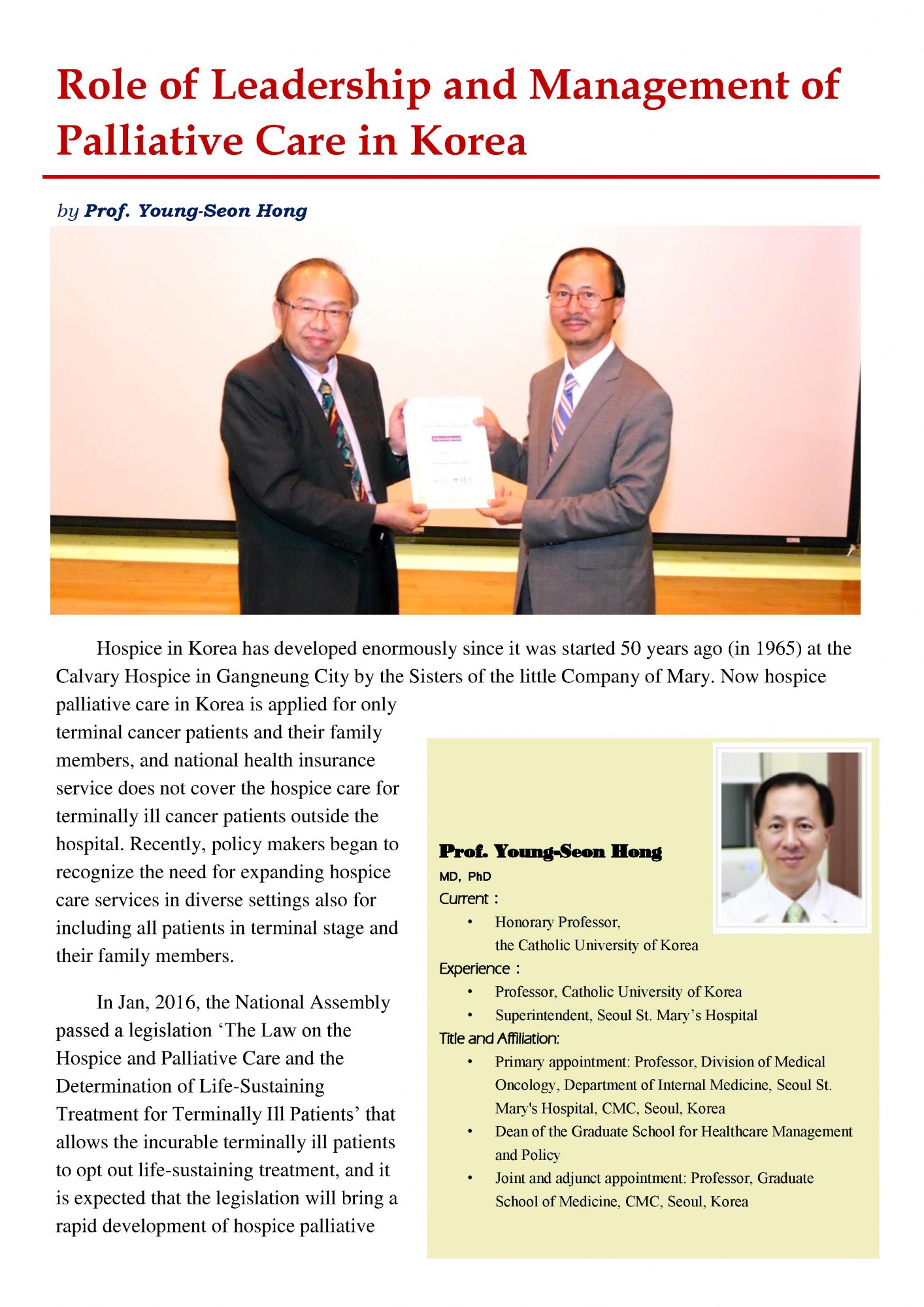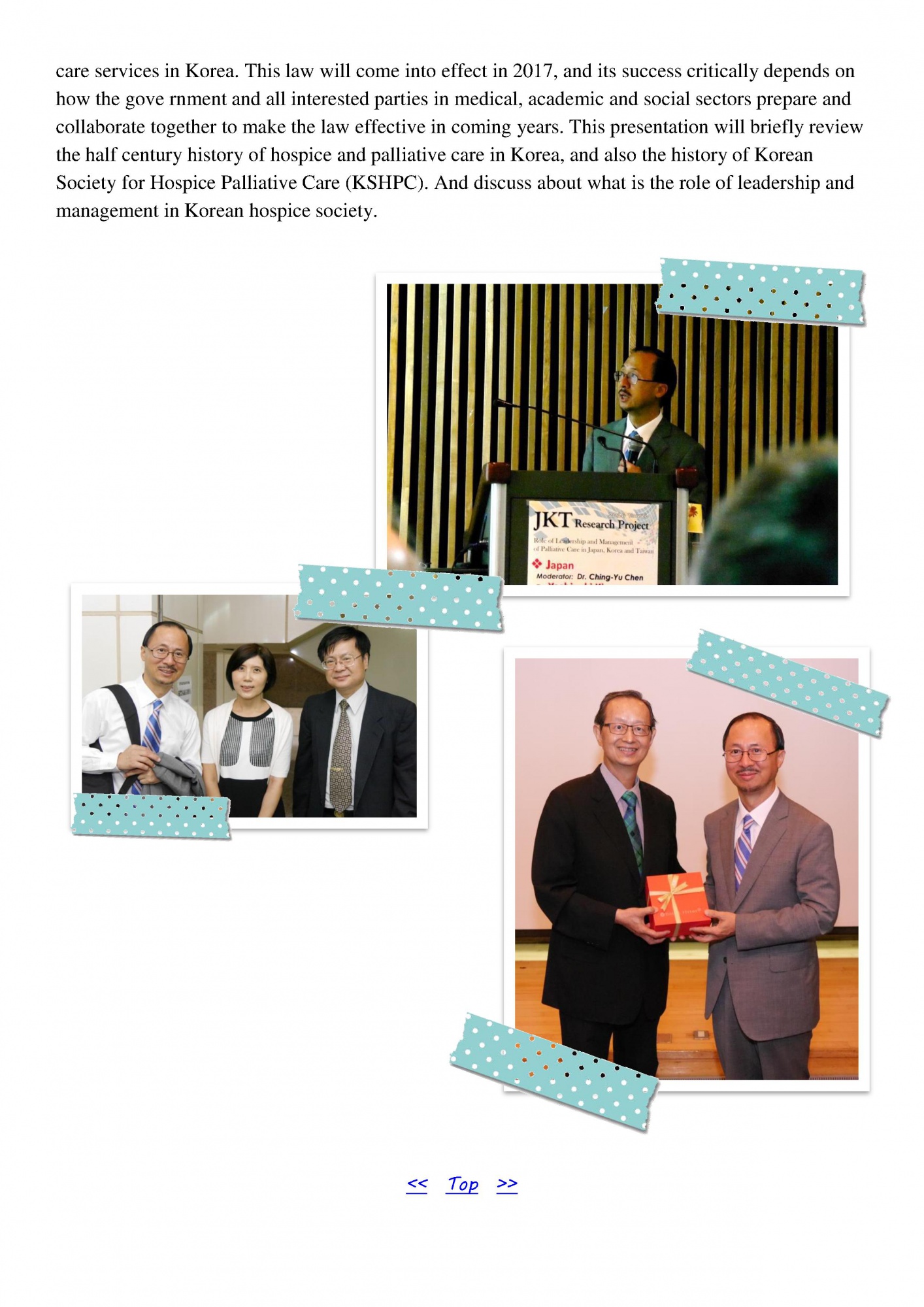Hospice in Korea has developed enormously since it was started 50 years ago (in 1965) at the Calvary Hospice in Gangneung City by the Sisters of the little Company of Mary. Now hospice palliative care in Korea is applied for only terminal cancer patients and their family members, and national health insurance service does not cover the hospice care for terminally ill cancer patients outside the hospital. Recently, policy makers began to recognize the need for expanding hospice care services in diverse settings also for including all patients in terminal stage and their family members.
In Jan, 2016, the National Assembly passed a legislation ‘The Law on the Hospice and Palliative Care and the Determination of Life-Sustaining Treatment for Terminally Ill Patients’ that allows the incurable terminally ill patients to opt out life-sustaining treatment, and it is expected that the legislation will bring a rapid development of hospice palliative care services in Korea. This law will come into effect in 2017, and its success critically depends on how the gove rnment and all interested parties in medical, academic and social sectors prepare and collaborate together to make the law effective in coming years. This presentation will briefly review the half century history of hospice and palliative care in Korea, and also the history of Korean Society for Hospice Palliative Care (KSHPC). And discuss about what is the role of leadership and management in Korean hospice society.


